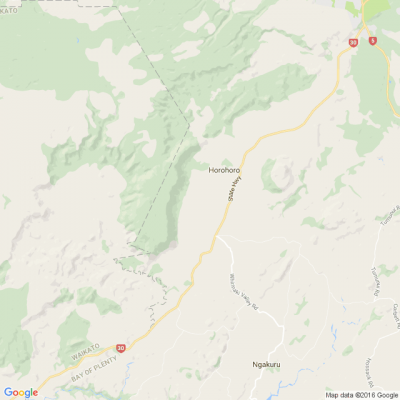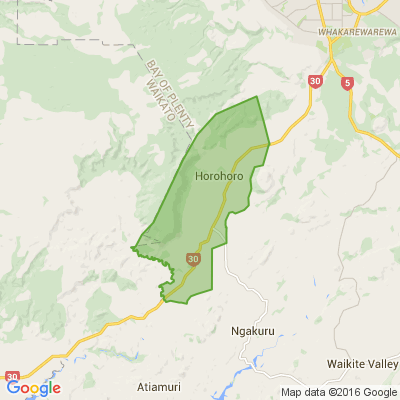
Know what’s happening
Access the private noticeboard for verified neighbours near you. Keep informed about any suspicious activity, send urgent updates to your neighbours when required and discuss emergency planning.
Get to know your neighbours
Browse the directory and start getting to know your neighbours. Don’t want to post to the whole neighbourhood? Send a private message.
Buy, sell and give away
Want to declutter your garage? Buy some used household items? Give away some garden stuff? Become a verified neighbour to browse and post items for sale. Trading is simple when everyone lives nearby.


Wondering about something in your neighbourhood?
Whether it's a new building going up or a strange noise you keep hearing, ask your neighbours!

Thank you for using Neighbourly
You may receive an email confirmation for any offer you selected. The associated companies will contact you directly to activate your requests.
Daniel from Hillcrest - Pomare
I am looking for a fridge that is in good working order.message me if you have one thanks
While any day makes for a great opportunity to celebrate the women in your life, International Women’s Day gives you one more reason to do exactly that. International Women’s Day is on March 8th, and is a global day that recognises the incredible achievements of women, raises awareness, and … View moreWhile any day makes for a great opportunity to celebrate the women in your life, International Women’s Day gives you one more reason to do exactly that. International Women’s Day is on March 8th, and is a global day that recognises the incredible achievements of women, raises awareness, and encourages others to advocate for gender equality.

Solve the world’s food and fibre challenges with your idea! Fieldays Innovation Awards is now accepting applications.
The total prize package is over $60,000 worth of cash, services, and products with tailored opportunities to progress innovations in each award category.
Entries for the … View moreSolve the world’s food and fibre challenges with your idea! Fieldays Innovation Awards is now accepting applications.
The total prize package is over $60,000 worth of cash, services, and products with tailored opportunities to progress innovations in each award category.
Entries for the awards are open now until 1 May 2022. Apply now!
Find out more

Enjoy a 9-day dream touring experience for two across the South Island. T's and C's apply. Find out more

The Team from Resene ColorShop Rotorua
Help Resene raise awareness for Epilepsy NZ. Buy any purple testpot during March and Resene will donate $1 to Epilepsy NZ. Offer applies to all Resene purple 60 mL testpots (excludes metallic and wood stains) purchased by retail customers between 1-31 March 2022 at Resene owned ColorShops NZ.
To… View moreHelp Resene raise awareness for Epilepsy NZ. Buy any purple testpot during March and Resene will donate $1 to Epilepsy NZ. Offer applies to all Resene purple 60 mL testpots (excludes metallic and wood stains) purchased by retail customers between 1-31 March 2022 at Resene owned ColorShops NZ.
To find your nearest Resene ColorShop, click here. To find out more about Epilepsy NZ and how you can help, visit the Epilepsy NZ website. Happy purple painting!

Next to our homes, our garden can be our most prized possession! If you want to protect yours from our changing climate: keep an eye out for Climate Insight’s next tool, which will identify any risks your garden may face and give you advice on how to mitigate them. Your personalised report will … View moreNext to our homes, our garden can be our most prized possession! If you want to protect yours from our changing climate: keep an eye out for Climate Insight’s next tool, which will identify any risks your garden may face and give you advice on how to mitigate them. Your personalised report will delve into projected changes in temperature, precipitation, heat waves, growing degree days and much more allowing you to future proof that special space!
Check out our website for more information: www.climateinsights.global....
To get a risk assessment for your home check out our residential property reports.
Find out more

For many it may well seem like Covid is closing in and infection is now seemingly unavoidable. Is this actually the case?
Keith Lynch investigates in his latest Stuff Explained column. You can read that here.
For more on the 'why' behind the news', sign up to receive … View moreFor many it may well seem like Covid is closing in and infection is now seemingly unavoidable. Is this actually the case?
Keith Lynch investigates in his latest Stuff Explained column. You can read that here.
For more on the 'why' behind the news', sign up to receive 'Explained' straight to your inbox, here.

We teach a variety of language features in our program – hyperbole, personification, similes, metaphors, onomatopoeia and alliteration.

It’s time to give your favourite local business owner the recognition they deserve by nominating them in the 2022 Prospa Local Business Hero awards – and they could be up for some fantastic prizes.
As NZ’s business lending specialists, we at Prospa love seeing small businesses reach … View moreIt’s time to give your favourite local business owner the recognition they deserve by nominating them in the 2022 Prospa Local Business Hero awards – and they could be up for some fantastic prizes.
As NZ’s business lending specialists, we at Prospa love seeing small businesses reach their goals with a faster, easier approach to business loans. And we’re proud to be back sponsoring the 2022 Prospa Local Business Hero awards.
Find out more

Stuff Explained seeks to explain the 'why' behind the news, delivered straight to your inbox.
Curated by Stuff's Explainer Editor Keith Lynch, the fortnightly newsletter explains everything from the ongoing Covid-19 pandemic, to the inner workings of the economy, to the forces … View moreStuff Explained seeks to explain the 'why' behind the news, delivered straight to your inbox.
Curated by Stuff's Explainer Editor Keith Lynch, the fortnightly newsletter explains everything from the ongoing Covid-19 pandemic, to the inner workings of the economy, to the forces that are shaping how New Zealanders live. It will feature original explainer reporting keeping you up to date with the biggest issues, along with the very best in Stuff Explained reporting you may have missed.
Sign up here (it's free!).
Sign up

Enjoy a 9 day dream touring experience for two across the South Island and immerse yourself in incredible landscapes, heritage and culture.
Itinerary includes popular destinations such as Queenstown, Dunedin and Doubtful Sound. Terms and Competitions apply.
Find out more

Work’s way more fun when you’re winning, and that’s why Apata has heaps of rewards and sweet giveaways for 2022 March to June seasonal staff!
You can also choose to work the days and hours that suit you best. There’s also BP cards and New World vouchers on offer just for signing up or … View moreWork’s way more fun when you’re winning, and that’s why Apata has heaps of rewards and sweet giveaways for 2022 March to June seasonal staff!
You can also choose to work the days and hours that suit you best. There’s also BP cards and New World vouchers on offer just for signing up or referring a friend. *T&C’s apply
Find out more

Hi neighbours,
We're right in the thick of this year's Wasp Wipeout and thanks to your generous donations, we've raised over $10,000 for the Tasman Environmental Trust.
There's still plenty of work still to be done. We want this year to be the best yet for our donation … View moreHi neighbours,
We're right in the thick of this year's Wasp Wipeout and thanks to your generous donations, we've raised over $10,000 for the Tasman Environmental Trust.
There's still plenty of work still to be done. We want this year to be the best yet for our donation drive - so stand with our forests, stand with our native wildlife, stand with our volunteers and show your support.
Donate now and let's rid Aotearoa New Zealand of this destructive pest.
DONATE NOW

Robert Anderson from Curtain Clean Rotorua
Is your velvet sofa looking less than luxe? Learn how to clean velvet furniture and keep it looking as sumptuous as the day you bought it.
Choosing velvet furniture is choosing to make a bold style statement in your space—there’s no ignoring its soft sheen, rich colour, and innate elegance. … View moreIs your velvet sofa looking less than luxe? Learn how to clean velvet furniture and keep it looking as sumptuous as the day you bought it.
Choosing velvet furniture is choosing to make a bold style statement in your space—there’s no ignoring its soft sheen, rich colour, and innate elegance. But velvet’s commanding presence also means that any discoloration or stains are that much more visible. No more hiding a dusty apartment…once the sunlight hits a velvet couch, there’s no hiding those annoying, allergy-inducing particles.
If you’ve opted for a bright, richly pigmented colour, like navy or chartreuse, we recommend avoiding direct sunlight, which can cause the fabric to fade. Consider window coverings substantial enough to protect your piece but lovely enough to catch the eye. Read on to learn how to clean velvet furniture and protect it from wear and tear and those inevitable spills.
Materials:
- Vacuum
- Absorbent cloth
- Soap and water or an upholstery cleaner
- Soft brush
Vacuum the fabric: Remember those pesky dust particles we were talking about? Well, in terms of regular maintenance, all you need to do to the item itself is give it a good dusting. We recommend regular vacuuming; a soft brush can also loosen surface dirt and brush it away.
Tackle spills the right way: If a friend does happen to spill their cocktail on your couch, White suggests blotting the area immediately with a clean, dry absorbent cloth. We then recommend mandating said friend to a different spot in your home. No one likes a party foul.
Test cleaning products: If a dried stain is staring you in the face and you just can’t help but do something about it, test any cleaning product (even basic soap and water) on a hidden spot to ensure it doesn’t ruin the fabric. Mix soap and water to create a sudsy solution. Use a soft cloth to blot the stain with the suds, then let the fabric dry completely.
Brush the fabric: Once the velvet is dry, use a soft, dry brush in the direction of the pile to restore its direction and loft. This will give the velvet that brand-new, never-been-touched look.
Turn to a professional: When in doubt, ask for help. It’s best to professionally clean the entire piece to ensure the colour remains uniform. To ensure your velvet furniture remains in optimal condition, you should have it professionally cleaned. Next up? Sit back, relax, and enjoy your good-as-new upholstery.

 Loading…
Loading…
Are you sure? Deleting this message permanently removes it from the Neighbourly website.
 Loading…
Loading…

 By Negotiation
By Negotiation



 Marketed by Michelle Lamberton
Marketed by Michelle Lamberton
© Neighbourly 2025
